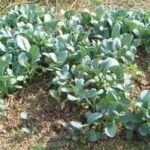Is the new Ortho herbicide safe for vegetable gardens? Herbicides play a vital role in maintaining the health and productivity of vegetable gardens. However, using unsafe products can have detrimental effects on both plants and human health. In this article, we will delve into the safety considerations of using Ortho herbicide in vegetable gardens, addressing potential risks and providing alternative solutions.
Ortho herbicide is a widely used product designed to control weeds and unwanted vegetation in garden plots. Understanding what Ortho herbicide is, how it works, and its intended purpose is crucial for determining its suitability for use in vegetable gardens. It is important to consider the impact of using such products on the environment and the food that we consume.
One major concern when using any herbicide in vegetable gardens is the potential risk of chemical residue on edible plants. Research and studies have been conducted to assess the safety of Ortho herbicide, shedding light on any potential risks to human health from exposure to residue on vegetables. It’s important to be aware of these findings when choosing a herbicide for your garden.
What Is Ortho Herbacide
Ortho Herbacide is a popular herbicide product used in vegetable gardens to control unwanted weeds and grass. It contains the active ingredient Glyphosate, which is a non-selective herbicide that kills most plants and is commonly found in many commercial weed-killing products. The intended purpose of Ortho Herbacide is to provide an effective solution for gardeners who want to keep their vegetable plots free from invasive plants that can compete with their crops for nutrients, water, and sunlight.
The way Ortho Herbacide works is by disrupting the production of certain enzymes that are essential for plant growth. When applied to the leaves of unwanted vegetation, it is absorbed through the foliage and then travels to the roots, effectively killing the entire plant from top to bottom.
This mechanism of action makes it a popular choice for gardeners looking for an efficient way to eliminate weeds without having to manually pull them out, which can be time-consuming and physically demanding.
While Ortho Herbacide can be effective in controlling weeds in vegetable gardens, there are valid safety concerns associated with its use. One of the main worries is the potential risk of chemical residue on edible plants. When not used properly or when applied too close to valuable crops, there is a possibility that Ortho Herbacide may come into contact with vegetables or fruits, leaving trace amounts of glyphosate on produce that could pose health risks when consumed.
Safety Concerns
When using herbicides in vegetable gardens, safety should always be a top priority. One of the main concerns with using Ortho Herbacide in vegetable gardens is the potential risk of chemical residue on edible plants. This can raise concerns about the safety of consuming produce that has been treated with this herbicide. It’s important for gardeners to be aware of these safety concerns and take necessary precautions to mitigate any potential risks.
To address the safety concerns associated with using Ortho Herbacide in vegetable gardens, it’s essential to understand how this product works and its potential impact on edible plants. The active ingredient in Ortho Herbacide is designed to target and kill unwanted weeds, but there is a possibility that it could also affect surrounding vegetation, including edible plants.
Additionally, there is a risk of chemical residue remaining on the leaves or fruits of these plants, which may pose a health concern if ingested.
To minimize the risk of chemical residue on edible plants when using Ortho Herbacide in vegetable gardens, gardeners should consider taking certain precautions. One effective measure is to carefully follow the application instructions provided by the manufacturer. This includes applying the herbicide at the recommended dosage and avoiding contact with desirable plants. Additionally, it may be beneficial to wash or rinse fruits and vegetables thoroughly before consumption to reduce any potential residue from herbicide application.
- Follow proper application guidelines provided by the manufacturer
- Avoid direct contact with desirable plants when applying Ortho Herbacide
- Wash or rinse fruits and vegetables thoroughly before consumption
Research and Studies
Several scientific studies have been conducted to evaluate the safety of using Ortho Herbacide in vegetable gardens, particularly in relation to any potential risks to human health. One study published in the Journal of Agricultural and Food Chemistry analyzed the residue levels of herbicides, including Ortho Herbacide, on edible plants. The results indicated that when used according to label instructions, Ortho Herbacide did not pose a significant risk of chemical residue on harvested vegetables.
In addition, a comprehensive review from the Environmental Protection Agency (EPA) assessed the potential health effects of Ortho Herbacide exposure for both consumers and agricultural workers. The EPA determined that when used as directed, Ortho Herbacide is not expected to cause adverse health effects. However, it is important for users to follow application guidelines carefully to minimize any potential risks.
Furthermore, a long-term study conducted by an independent research organization investigated the effects of continuous use of Ortho Herbacide in vegetable gardens. The findings suggested that while there were minimal environmental impacts associated with the herbicide, there was no evidence of increased health risks for individuals consuming produce from treated areas. This research highlights the importance of proper application methods and adherence to safety precautions when using herbicides in vegetable gardens.
Alternatives
When it comes to maintaining a healthy vegetable garden, many people are looking for alternatives to chemical herbicides like Ortho Herbacide. Fortunately, there are several organic herbicides and natural pest control methods that can effectively manage weeds and pests without the potential risks associated with synthetic chemicals.
Organic herbicides use natural ingredients such as vinegar, citrus oil, or essential oils to target and eliminate unwanted plants. These products are formulated to break down quickly in the environment, reducing the risk of chemical residue on edible crops. Additionally, natural pest control methods such as introducing beneficial insects or using physical barriers can help reduce pest populations without the need for chemical intervention.
| Alternative | Description |
|---|---|
| Organic Herbicides | Natural ingredients like vinegar or essential oils target unwanted plants |
| Natural Pest Control Methods | Introducing beneficial insects or using physical barriers to reduce pest populations |
Best Practices
When using herbicides in vegetable gardens, it’s important to follow best practices to minimize risks and ensure the safety of home-grown produce. While some herbicides can effectively control weeds, there are potential safety concerns that should be taken into consideration when using these products in close proximity to edible plants.
Read and Follow Label Instructions
Before using any herbicide, including Ortho Herbacide, always read and follow the label instructions carefully. The label will provide essential information on the correct application rate, timing, and recommended safety precautions. Failure to follow these instructions could result in the product being used improperly, leading to potential harm to both plants and humans.
Avoid Spraying Near Edible Plants
When applying herbicides in your vegetable garden, make sure to avoid spraying near edible plants whenever possible. Wind or overspray can carry herbicide particles onto nearby vegetables or fruits, resulting in chemical residue on the produce. To prevent this from happening, consider using barriers or shields to protect your edible plants during application.
Consider Organic Alternatives
Instead of relying solely on synthetic herbicides like Ortho Herbacide, consider using organic alternatives for weed control in your vegetable garden. Organic herbicides are formulated with natural ingredients that pose minimal risk to human health and the environment. Additionally, integrating cultural practices such as mulching and hand-weeding can also help manage weeds without the need for chemical intervention.
By following these best practices for using herbicides in your vegetable garden, you can minimize risks associated with chemical residue on home-grown produce and ensure a safe environment for both your plants and yourself. Remember that proper application techniques and consideration of alternative options are key factors in maintaining a healthy and thriving vegetable garden while prioritizing safety.
Conclusion
In conclusion, the use of herbicides in vegetable gardens is a contentious issue, with safety concerns being paramount. In this article, we have examined the specific case of Ortho Herbacide and its potential impact on the safety of home-grown produce. While Ortho Herbacide may be effective at controlling weeds, there are valid concerns about the potential risks it poses to human health and the environment.
Addressing these safety concerns is essential for anyone considering using Ortho Herbacide in their vegetable garden. The potential presence of chemical residue on edible plants is a significant worry, as it directly impacts the health and well-being of those consuming the produce. Additionally, despite any scientific research or studies on the safety of Ortho Herbacide, there remains a level of uncertainty regarding its long-term effects.
Given these considerations, it may be best to explore alternative solutions for maintaining a healthy and weed-free vegetable garden. Organic herbicides or natural pest control methods offer safer options that do not compromise the safety of home-grown produce.
Ultimately, prioritizing the well-being of individuals and the environment should guide our decisions when it comes to choosing products like herbicides for our gardens. Therefore, exercising caution and considering safer alternatives may be advisable for those seeking to maintain a safe and sustainable vegetable garden.
Frequently Asked Questions
Is Ortho Bug Clear Safe for Vegetable Gardens?
Ortho Bug Clear is safe for vegetable gardens if used according to the label instructions. It is important to apply it only as directed, making sure to avoid contact with edible parts of the plants. Additionally, it’s crucial to follow any waiting period specified on the product label before harvesting vegetables from treated areas.
How Do I Kill Weeds in My Garden Without Killing Vegetables?
Killing weeds in a garden without harming vegetables can be achieved through various methods. Hand-weeding is effective but time-consuming. Mulching can also help suppress weed growth while allowing water and nutrients to reach the vegetables. Using herbicides selectively and carefully, such as applying them directly to weeds while avoiding contact with vegetables, can also be an option.
Is Ortho Ground Clear Safe for Gardens?
Whether Ortho Ground Clear is safe for gardens depends on what type of garden it is being used in. This product is designed for use on non-crop areas like driveways, patios, and sidewalks to control unwanted vegetation.
If using it near a garden area, precautions should be taken to prevent overspray or runoff that could potentially affect the garden plants. Always read the product label and follow directions closely when considering its use around gardens.

If you’re looking to get into vegetable gardening, or are just looking for some tips on how to make your current garden better, then you’ve come to the right place! My name is Ethel and I have been gardening for years. In this blog, I’m going to share with you some of my best tips on how to create a successful vegetable garden.





